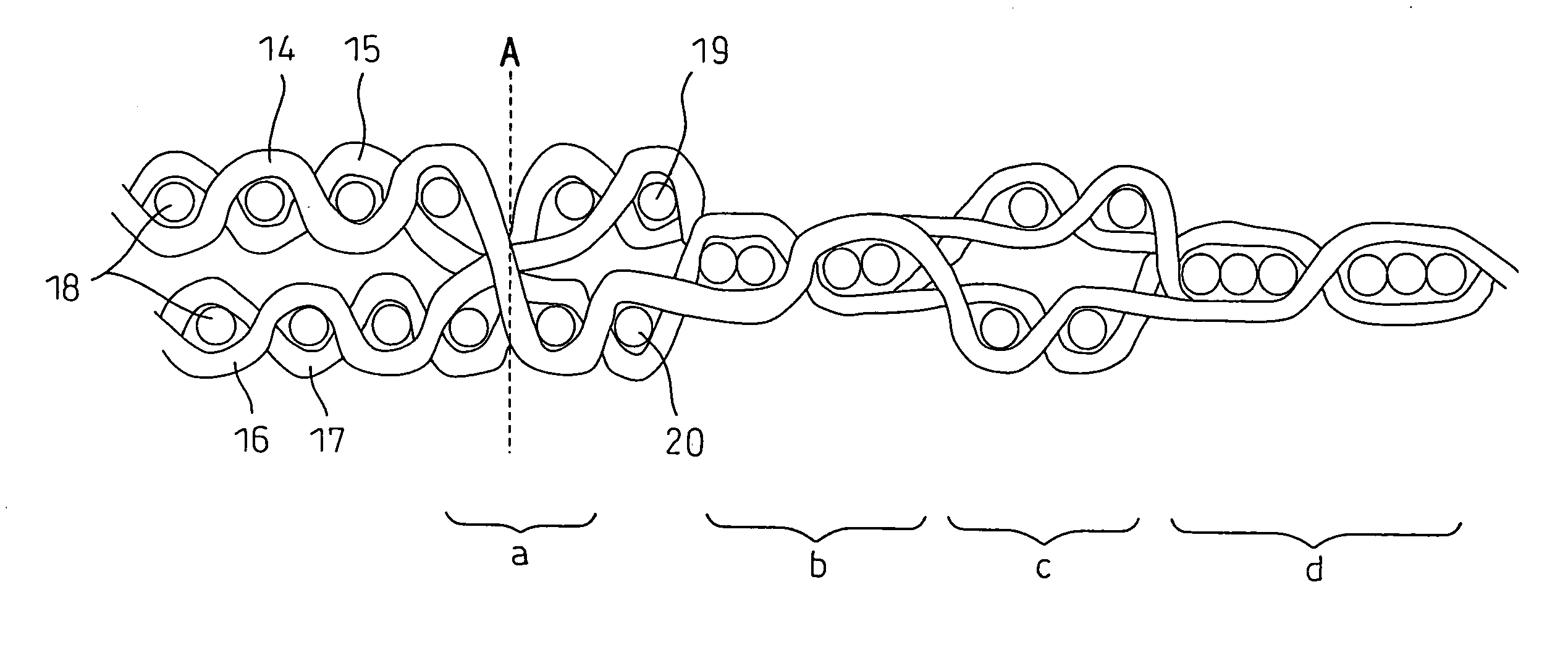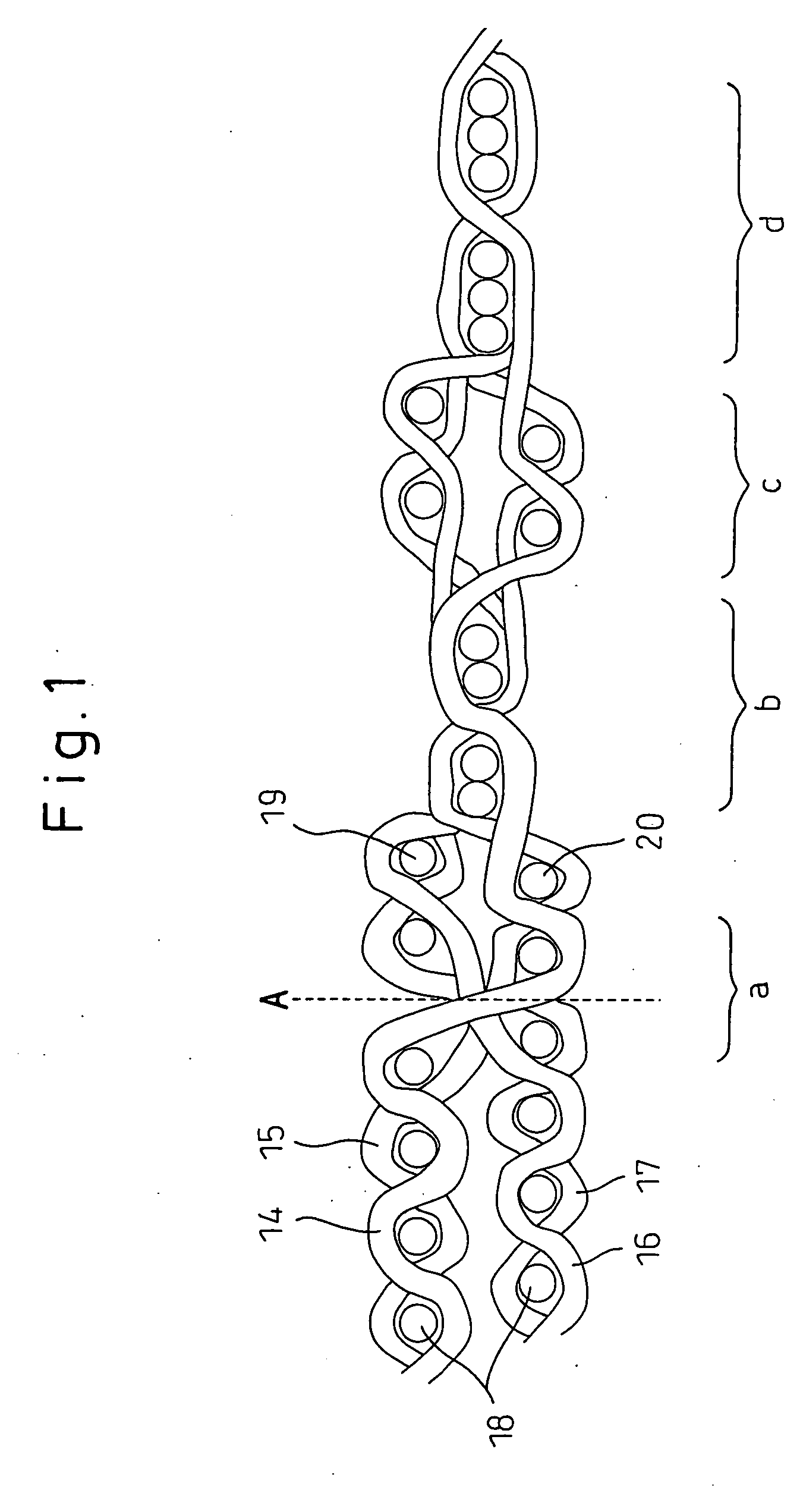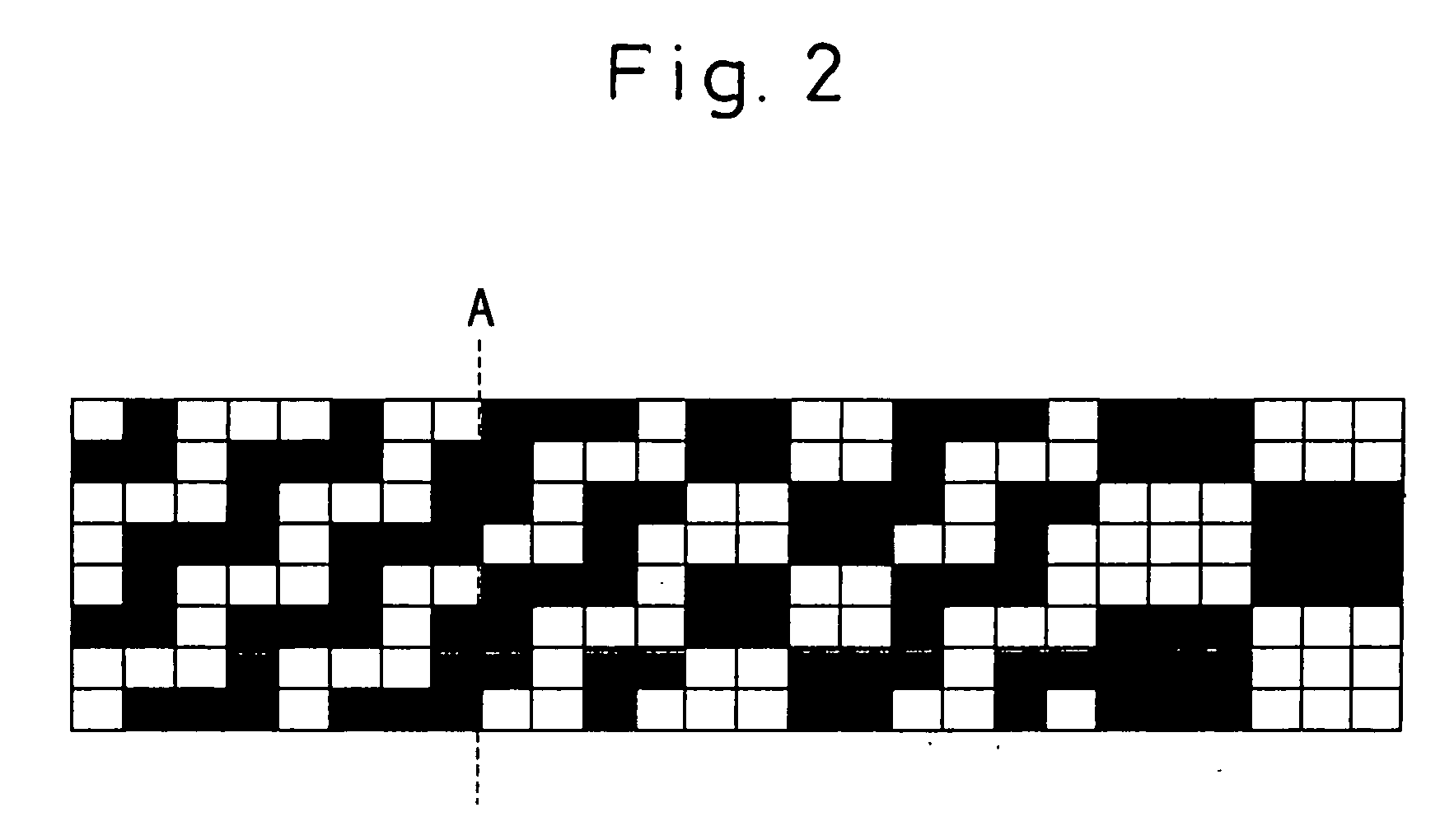High-density hollow weave ground fabric
a high-density, weave fabric technology, applied in weaving, pedestrian/occupant safety arrangements, vehicular safety arrangements, etc., can solve the problems of reducing the mechanical strength of the fabric, affecting the quality of the ground fabric, and affecting the containment ability, etc., to achieve excellent fabric quality, reduce the effect of air leakage, and be easily deployed
- Summary
- Abstract
- Description
- Claims
- Application Information
AI Technical Summary
Benefits of technology
Problems solved by technology
Method used
Image
Examples
example 1
[0134] A gray fabric was woven from non-twisted polyhexamethylene adipamide filament yarns having the yarn size of 235 dtex and the fiber fineness of 3.3 dtex, the interlaced points of 32 / m, the interlacement strength of 27% and the oil adhesion amount of 1.0% by weight used as warp yarns and weft yarns by using the above-mentioned rapier loom and electronic jacquard machine under the condition wherein a warp density on loom is 126.6 end / 2.54 cm, a weft density on loom is 136 end / 2.54 cm, a space ratio of the reed is 66.8% and a warp tension during the weaving operation is 0.25 cN / dtex. The seam zone was composed of the 2 / 2 basket weave pattern formed of six yarns, the narrow width hollow weave portion formed of four yarns and the 3 / 3 basket weave pattern formed of six yarns as seen from the double-layer hollow weave portion side. Then, this gray fabric was subjected to a scouring and setting process, and thereafter subjected to a coating process wherein an amount of 50 g / m2 of sili...
example 2
[0141] Under the same condition as in Example 1, a finished fabric having the warp density of 137 end / 2.54 cm and the weft density of 146 end / 2.54 cm was obtained, except that the warp density on loom was changed to 120.0 end / 2.54 cm. The cover factor in the narrow width hollow weave portion was 2169 on one surface.
[0142] Properties of the resultant fabric were shown on Table 1. That is, there was no loom stoppage during the weaving operation which shows that the weavability is favorable. The finished fabric was free from wrinkles and coating irregularity. The roughness of the seam zone was low and allowable, and the retention ratio of the internal pressure was also good. The fabric was soft and the adhesiveness against anti-wet heat treatment was excellent. Also, the fabric was deployable at a high speed because the yarn size is as small as 235 dtex.
example 3
[0143] Under the same condition as in Example 1, a finished fabric having the warp density of 160 end / 2.54 cm and the weft density of 142 end / 2.54 cm was obtained, except that the warp density on loom was changed to 147.4 end / 2.54 cm. The cover factor in the narrow width hollow weave portion was 2315 on one surface.
[0144] Properties of the resultant fabric were shown on Table 1. That is, the loom stoppage was extremely few which shows that the weavability is favorable. The finished fabric was free from generation of wrinkles and coating irregularity. The flatness of the boundary was favorable, and the retention ratio of the internal pressure was very good which means that the impact on the human body is small. The adhesiveness against anti-wet heat treatment was excellent. Also, the fabric was deployable at a high speed because the yarn size is as small as 235 dtex.
PUM
| Property | Measurement | Unit |
|---|---|---|
| Fraction | aaaaa | aaaaa |
| Size | aaaaa | aaaaa |
| Density | aaaaa | aaaaa |
Abstract
Description
Claims
Application Information
 Login to View More
Login to View More - R&D
- Intellectual Property
- Life Sciences
- Materials
- Tech Scout
- Unparalleled Data Quality
- Higher Quality Content
- 60% Fewer Hallucinations
Browse by: Latest US Patents, China's latest patents, Technical Efficacy Thesaurus, Application Domain, Technology Topic, Popular Technical Reports.
© 2025 PatSnap. All rights reserved.Legal|Privacy policy|Modern Slavery Act Transparency Statement|Sitemap|About US| Contact US: help@patsnap.com



